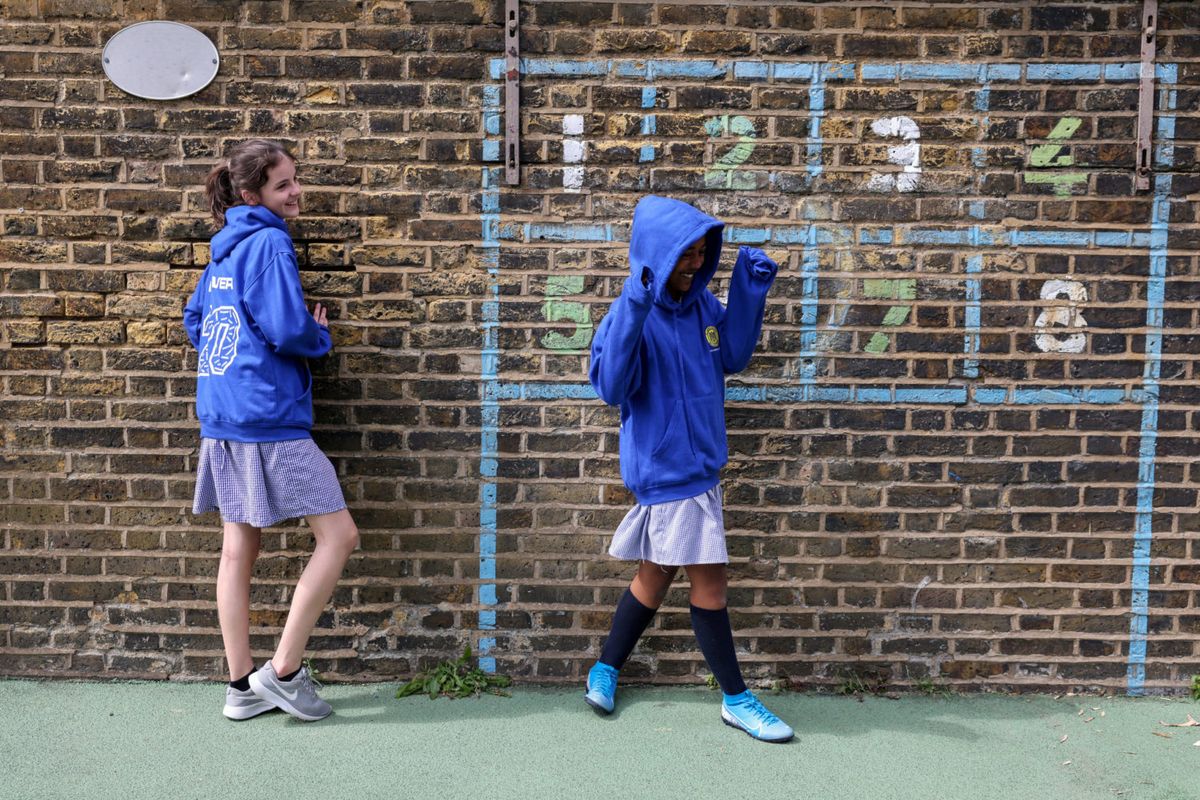The toll COVID-19 has taken on students, explained

A few minutes every morning is all you need.
Stay up to date on the world's Headlines and Human Stories. It's fun, it's factual, it's fluff-free.
With most classes being held online during the pandemic, students with little or no internet access are likely to miss a year of proper schooling, leaving them with a massive hill to climb if they ever hope to catch up.
When lockdowns were announced last March, students across the country were forced to finish the rest of the spring semester online. Many students struggled with the transition to online learning while teachers faced a new and unexpected challenge in adapting their lessons for home learning. To top things off, students missed out on important milestones like state finals and graduations.
Ultimately, it may be impossible to measure the full and lasting effects that COVID-19 has had on students, but the pandemic has doubtlessly affected the entire education system.
The digital divide has widened the educational gap
The switch to a digital classroom negatively affected financially disadvantaged students the most. In what is already an uneven playing field, students who relied on schools for the many resources they provided were left in limbo. Though many of the issues, like free school lunches, have since been addressed, students from rural and high-poverty areas still face hardships.
The Rand Corporation surveyed teachers on their interactions with students, students’ parents and students’ internet access. The study found that “only 30 percent of teachers in high-poverty schools reported that all or nearly all of their students had access to the internet at home, compared with 83 percent of teachers in low-poverty schools.”
With most classes being held online during the pandemic, students with little or no internet access are likely to miss a year of proper schooling, leaving them with a massive hill to climb if they ever hope to catch up.
On April 21, New York Representative Grace Meng introduced the Emergency Connectivity Fund, a US$2 billion fund dedicated to improving internet access through Wi-Fi hot spots, routers and other devices.
Abuse and neglect are harder to detect
The social and economic stress that the COVID-19 pandemic has put on families has resulted in higher incidents of abuse perpetrated against women and girls, with calls to helplines increasing fivefold since the pandemic began.
Being able to attend school would normally provide some refuge to those who are abused at home, as they are able to get away for at least a few hours each day. Because the system for catching abuse in many countries, including the United States, tends to rely on children leaving the home, cases of abuse are sometimes failing to garner notice.
Reports of maltreatment and neglect have declined due to the lack of face-to-face interaction between students and teachers, with a report published in the journal Child Abuse & Neglect finding that as children no longer interact with mandatory reporters like teachers or physicians, the number reporting abuse decreased by 29% in March and 50% in April.
There has also been a decrease in the number of investigations by social services. Despite this, the study found that online reports from children reporting abuse have increased by 31%. Hospitals have also reported a sharp rise in cases of severe injuries in children from family violence.
The social and psychological toll of distanced learning
Some have even made the argument that shutting down schools has had a greater negative effect on students than the coronavirus.
Kriya Lendzion, a middle-school counselor, sent out anonymous surveys to all 208 of her students in October. She shared her findings with TMS.
“An extraordinary one third of the kids described struggling with anxiety and/or depression, and 70% of the kids put their stress levels at 3-5 on a 5-point scale.” Lendzion reported. She believes that the main issue her students are having is the lack of normal interaction with fellow students.
“Developmentally and instinctually, they are programmed to be ‘seeking their tribe,’” she says. “And social disconnection like this triggers their survival-instinct brains into a danger alert mode that feels like anxiety.”
High school seniors and first-year college students also missed out on important social events in 2020.
Dr. Annie Varvaryan, a clinical psychologist in California, notes an increase in teenager caseloads due to the challenges of remote schooling. “Students have a unique challenge of having to navigate the quarantine while also having some major changes to their lives,” she told TMS. “Think about all of the students who were in their senior year of high school or college who were unable to meet the milestones they have been looking forward to for years (i.e., prom, senior night, graduation, etc.).”
Missing these milestones, along with the isolation students feel because of online learning, leads to a number of mental health challenges.
“In my practice, I have seen an uptick in symptoms of anxiety, depression and stress as a result of the coronavirus in students,” Varvaryan said.
“Pandemic haze”
Dr. Samantha Gray calls what students are experiencing a “pandemic haze” – days that bleed into each other with no real difference. Dr. Gray teaches psychology at the University of Indianapolis and reports a decline in the quality of her students’ work, especially her undergraduate pupils.
“Unlike school-aged children, college students generally do not have the in-person support of a parent leaning over them to ensure they are doing their work, staying organized, keeping their routines, etc. Young adults who went off to college are typically emerging from the structure of their parents’ home, which is developmentally normative. Sadly, this year may have been precisely when they needed to hold on to that structure and support a bit longer, or put other supports in to keep them on track.”
But there is some relatively good news. A report from the Northwest Evaluation Association (NWEA) that compares testing data from 2019 to 2020 indicates that the switch to online learning has had little impact on reading scores and only somewhat slowed the growth in math. In conducting their study, the NWEA analyzed data from students in third through eighth grade.
The NWEA states, however, that the study should be approached with cautious optimism. “Fall 2020 assessment results, administered in person or remotely, may not be capturing a significant portion of the student population,” Angela Johnson and Megan Kuhfeld, two of the report’s authors, note. “Many schools are not administering assessments at all due to technological and other challenges.”
“Stress, social isolation, and fear or lack of hope can certainly impact one’s social, academic, and psychological well-being,” Dr. Gray added. “COVID-19 hit on all those fronts for many students.”
Have a tip or story? Get in touch with our reporters at tips@themilsource.com




Comments ()